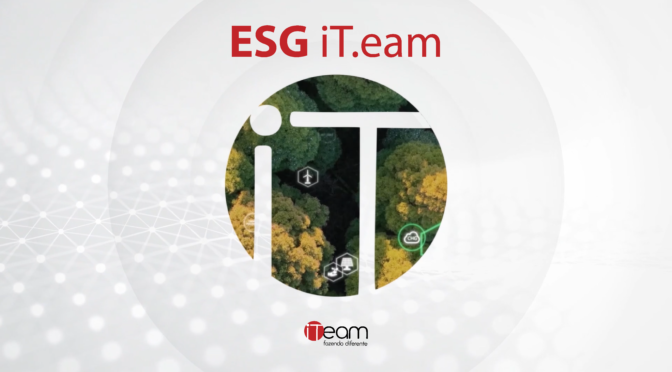Does your company know what a security vulnerability is and how it should be combated? Among the topics involving data protection, this is one of the most important. After all, the use of IT in the corporate environment depends on the reliability of services and solutions.
Anyone who invests in technology knows that a security vulnerability is a common risk. The more integrated the IT infrastructure is with corporate processes, the greater the concern the company must have with the risks that are linked to its systems.
But what are the most common problems and what is a security vulnerability? Read on and find out!
What is a security vulnerability?
A security vulnerability can be seen as any factor that can contribute to intrusions, data theft or unauthorized access to resources. They include - but are not limited to - items such as poorly configured software, devices with outdated systems and publicly exposed internal files. In other words, security breaches are points in the IT infrastructure that make it easier for unauthorized access to business resources.
How does a security vulnerability arise?
Security vulnerabilities can arise both from a lack of training for professionals and from using solutions in an inappropriate way. Leaving files publicly exposed is a sign that internal routines do not follow good practices and contribute to making the environment less reliable. Maintaining systems without updates, for example, can be caused by the end of software support or by ineffective testing and validation processes for updates.
How important is it to manage and mitigate security vulnerabilities?
Security vulnerability management is a process that brings greater reliability to the IT infrastructure. It ensures that the business integrates technology into various processes without compromising its reliability. In addition, the business can avoid attacks and, as a result, losses related to the loss and theft of internal data.
Without good risk management, integrating technology into the day-to-day running of the business will become a much more complex activity. After all, IT's reliability will be poorly validated by users. As a result, it is important that potential problems are monitored and mitigated on an ongoing basis.
By integrating technology into the day-to-day running of the business, teams can formulate smarter and more innovative measures. New solutions, such as cloud computing and IoT, will always be used. In this way, the company will be able to reduce costs and maximize its competitiveness through digital transformation.
What are the most common security vulnerabilities in the corporate environment?
The first step to preventing a security vulnerability from causing damage to your company is to be aware of the most common weaknesses. In this way, managers can identify the risks that could impact their business and thus define more effective risk prevention and mitigation measures. Check out some of the most common problems in this area below!
Code quality problems
Poorly structured software is much more likely to have security problems. They can be used to steal information or access sensitive business records through their vulnerabilities. In a scenario where technology is integrated into various activities, choosing quality solutions is key to avoiding security problems.
Inefficient data validation
An ineffective data validation system is a type of risk that can directly impact a business's ability to defend itself against attacks. Therefore, the company needs to have mechanisms in place to ensure that its verification methods can prevent attacks focused on hacking accounts with precision and quality. This will make your IT infrastructure and services more reliable.
Outdated software
Using outdated software is a serious flaw. This practice exposes the business to security vulnerabilities that can be used for attacks such as data theft and information hijacking. It is therefore essential to keep all tools with the latest version.
Not very robust system configuration
Every modern system has different security and data protection features. The team must know how they work and what their bases are. This allows the application to be configured with a focus on reducing vulnerabilities and points that could harm the user's day-to-day life.
Spreading bad practices
User practices can also create security problems. And this is precisely why many businesses invest heavily in employee training. After all, if their routines contribute to an increase in the number of breaches, the chances of the company falling victim to an attack will be much higher.
How can you avoid security vulnerabilities in your company?
To prevent security vulnerabilities from affecting the reliability of the business's IT infrastructure, certain measures can be taken. These should be unified in a well-structured security policy that guarantees IT professionals the ability to prevent, identify and mitigate threats and risks with high precision and agility. In this sense, the measures that can be taken include:
- use of infrastructure and network monitoring systems;
- creation of restrictive access control policies;
- definition of more intelligent and agile software update processes;
- instructing users to use complex passwords;
- setting up a continuous data backup process;
- adoption of two-step authentication (preferring local access validation methods, such as using apps to create verification codes or encrypted USB tokens), whenever possible;
- training professionals and disseminating good digital security practices;
- investment in SaaS or cloud computing;
- carrying out safety standards and monitoring trends in the area.
These measures help businesses avoid security risks and vulnerabilities. In this scenario, investment in SaaS (which helps to apply updates more quickly) and in the cloud (which makes data control more precise and centralized) is also seen as one of the IT trends for businesses that want to maintain a high level of security.
Knowing what a security vulnerability is is just the first step towards having a more reliable and robust infrastructure. The business also needs to invest in new technologies and always keep an eye on trends in the field. This will reduce risks and ensure that all workflows always have a good ability to take advantage of available resources.
Want to know more about how trends can help you make more profit and ensure the success of your strategies? Then take a look at our list of more IT trends and how they impact your business!
Leave a comment
See also:
iT.eam Copyright 2024 - Todos os direitos reservados.
Acesse nossa Política de Segurança da Informação. | Acesse nossa Política de Privacidade da Informação. | Acesse nossa Política Antissuborno e Anticorrupção. | Canal de Ética







